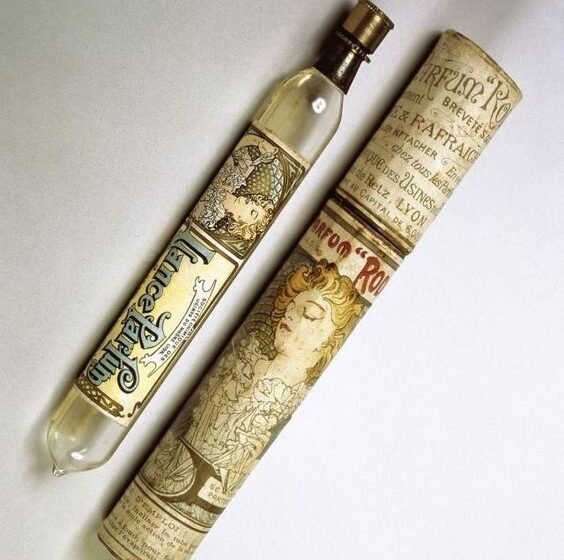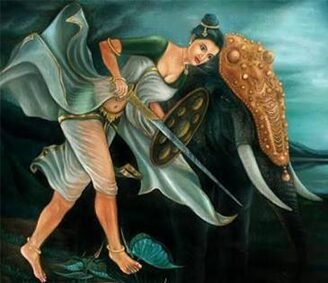Crafting Essence: Modern Techniques Redefining Perfumery

The Industrial Revolution and the Modern Era have left an indelible mark on the perfume industry, reshaping it in profound ways that continue to influence our olfactory experiences today. This transformative period ushered in mass production and chemical synthesis, revolutionizing the way fragrances were created, marketed, and consumed.

With the advent of the Industrial Revolution, the perfume industry underwent a metamorphosis. Previously reliant on labor-intensive methods of extraction and limited by the availability of natural resources, technological advancements opened up new horizons for perfumers. These innovations allowed for the extraction of essential oils from plants on a scale previously unimaginable, leading to the creation of a diverse array of fragrances that were more affordable and accessible to a broader audience.
Historian Alain Corbin observes that as improved hygiene practices became more prevalent in the latter half of the 19th century, there was a heightened awareness of unpleasant odors, driven by the expansion of water networks and the inclusion of bathing facilities in homes and apartments. Perfumed products, particularly scented toilet soaps, played a significant role in this hygiene revolution, allowing the bourgeoisie to distinguish themselves from the common populace.

The democratization of perfume consumption was a defining feature of this era. Perfumes, once considered a luxury reserved for the elite, became attainable for the masses. Brands recognized the power of advertising and marketing in promoting their creations, leveraging print media and later, television, to reach consumers with captivating narratives and imagery.
Starting in the 1860s, innovations introduced by perfume manufacturers, such as enhanced extraction techniques and the discovery of synthetic compounds after 1880, boosted productivity and lowered production costs. This led to an expansion of the consumer base, attracting new categories of customers.

These transformations profoundly reshaped the perfume market, democratizing access to fragrances while also giving rise to a luxury sector. This convergence culminated in the 1890s with the emergence of perfume bazaars and heightened competition among traditional perfume producers to reaffirm the value of their brands and products. As highlighted by Geoffrey Jones in his book on the beauty industry, the expanding markets of the 19th century compelled producers to ensure the quality and attractiveness of their offerings. This drive for differentiation led to the emergence of brands as conveyors of information and sources of value for firms.
Traditionally considered a costly commodity based on the price of its raw materials, by the 1880s, perfume had become more affordable due to mechanization and the utilization of synthetic compounds. Despite the decreased costs, some producers opted to maintain high prices by rebranding and imbuing their products with symbolic value. This shift towards a luxury market, where the worth of products transcended material costs, forms the central focus of this discourse.

In recent decades, there has been a growing demand for unique and personalized fragrances, marking a shift towards niche perfumery. Perfumers have risen to the challenge, offering an extensive range of options to cater to individual tastes and preferences. From bespoke fragrances crafted with rare and exotic ingredients to customizable scents that allow consumers to express their individuality, perfumery has evolved into an art form that celebrates creativity and innovation.
The modern era of perfumery traces its roots back to the late 19th century, with the commercial synthesis of aroma compounds like vanillin and coumarin. In 1868, William Henry Perkin pioneered the creation of the inaugural synthetic fragrance, coumarin. Originating from the tonka bean native to South America, coumarin presented an economical substitute for pricey natural ingredients, thereby establishing the cornerstone of the contemporary fragrance sector. These synthetic ingredients opened up new possibilities for perfumers, allowing them to create fragrances with scents previously unattainable from natural sources alone. This marked the beginning of a new chapter in perfumery, characterized by experimentation and exploration of novel scent compositions.

However, the path to modern perfumery was not without its challenges. During the French Revolution, perfume fell out of favor, associated as it was with the extravagance of the monarchy. Perfumers sought to reinvent their craft, creating fragrances with names like “Parfum de la Guillotine” to appeal to the masses and distance themselves from the elitist image of the Court.
Fortunately, this disenchantment was short-lived. Perfume once again found favor with the public, as society embraced a new era of luxury and refinement. The emergence of iconic fragrances like Eau de Cologne captured the imagination of the elite, including none other than Napoleon Bonaparte himself. The fragrance regained popularity swiftly, reclaiming its esteemed position within the Empire. Eau de Cologne was crafted by Jean-Marie Farina. This invigorating citrus water completely captivated the country’s elite and the emperor himself. Napoleon Bonaparte harbored a deep fondness for various scents, employing them lavishly in his daily regimen: from bathing to adorning his attire and even saturating his hair.

The allure of Eau de Cologne inspired him to an extraordinary extent, becoming a talisman of sorts. He ingested it before each military engagement, consuming as much as 40 liters per month! Napoleon’s commitment to presenting himself in the best possible light was unwavering, with hygiene and appearance holding paramount importance. Thus, he ensured his toiletry bag was always at hand, containing his cherished fragrance. Furthermore, Jean Marie Farina swiftly ascended to the position of the emperor’s official supplier, going as far as creating a bespoke bottle dubbed “the emperor’s roller,” designed to conveniently fit into an officer’s boot. During his exile on St Helena, Napoleon, in desperation, resorted to crafting his own Eau de Cologne, demonstrating the extent of his attachment to the scent.
The 19th century witnessed a proliferation of exotic scents, inspired by oriental fragrances and ingredients like patchouli, amber, and vanilla. These sensual and exotic perfumes captivated consumers, setting new trends and shaping the olfactory landscape for decades to come.

Throughout this period of transformation, the perfume industry experienced a democratization of sorts, as fragrances became more widely available to the general populace. Technological innovations, such as the discovery of new synthetic compounds, played a key role in lowering production costs and expanding consumer markets.
In the early 19th century, pioneering researchers embarked on groundbreaking endeavors to isolate intriguing olfactory molecules found in nature. This heralded the dawn of a true revolution in the realm of perfumery. Synthetic materials began to emerge, representing a paradigm shift in fragrance creation. Unlike their natural counterparts, synthetic ingredients were crafted from scratch, opening up a realm of boundless creativity and innovation. The introduction of compounds such as coumarin, vanillin, artificial musk, aldehydes, ionones, and heliotropin heralded a new era in perfume formulation, quickly embraced by esteemed perfumers like Guerlain, whose iconic fragrance Jicky prominently featured the use of vanillin.

As these new fragrances became more accessible, their incorporation into natural products added fresh nuances to existing compositions. Perfumery began to shed its exclusive aura, becoming increasingly democratized and accessible to a wider audience. The synthesis of fragrances proved to be a winning strategy, paving the way for the popularization of perfumery and its transformation into an industrial phenomenon across Europe.
Simultaneously, advancements in extraction techniques using volatile solvents enabled perfumers to obtain a diverse array of natural raw materials, expanding creative possibilities even further. These new ingredients found widespread use in perfume formulations, exerting a profound influence on the aesthetics of fragrances during this period. With the introduction of these innovative raw materials, a new frontier of creative exploration emerged, giving rise to abstract olfactory families such as oriental and ferns.

By the end of the 19th century, France had emerged as a powerhouse in the perfume industry, boasting 300 manufacturers, 2000 retailers, and a workforce of 20,000 dedicated individuals. This period represented a significant turning point in the history of perfume, bridging the gap between technical progress and popular demand. It marked the birth of the modern perfume industry, laying the groundwork for the vibrant and dynamic landscape of perfumery that we know today.
In the early 20th century, synthetic fragrances saw a surge in popularity as chemists embarked on the synthesis of novel aroma molecules that replicated or intensified the scents found in nature. A pivotal moment in perfume history occurred in 1921 with the launch of Chanel No. 5, a fragrance crafted by perfumer Ernest Beaux. Chanel No. 5 distinguished itself as a trailblazer in the industry, being the first significant perfume to incorporate aldehydes, synthetic compounds that imparted a distinctive luminosity and intricacy to the fragrance’s bouquet.

Today, synthetic ingredients are a staple in the fragrance industry, offering perfumers an extensive palette of scents to work with. However, the proliferation of synthetic scents has also raised concerns about sustainability and environmental impact. As demand for synthetic fragrances grows, so too does the need for sustainable production methods and eco-friendly alternatives. Synthetic fragrances have, however, facilitated the creation of hypoallergenic and vegan scents, meeting the demands of an expanding demographic of environmentally aware consumers.
The evolution of modern perfume marketing spans several decades, reflecting shifts in consumer preferences, technological advancements, and cultural trends. Perfume marketing in the early 20th century was characterized by print advertisements in magazines and newspapers. Brands focused on elegant imagery and romantic narratives to evoke desire for their fragrances. Celebrity endorsements also began to emerge during this period, with famous figures lending their names to perfume campaigns.

The mid-20th century saw the rise of television as a dominant advertising medium, leading to the proliferation of perfume commercials. Brands such as Chanel pioneered the use of television advertising to promote their fragrances, featuring glamorous celebrities like Marilyn Monroe to appeal to consumers. In the late 20th century, perfume marketing became increasingly focused on creating aspirational lifestyles and luxury experiences. Brands invested in elaborate advertising campaigns that showcased their fragrances as symbols of sophistication and allure. The use of high-profile celebrities and fashion icons in perfume commercials became more prevalent during this time.
The advent of the internet and digital technologies revolutionized perfume marketing, providing brands with new channels to reach consumers. E-commerce platforms allowed consumers to purchase fragrances online, while social media platforms provided opportunities for brands to engage directly with their audience and build communities around their products. Perfume marketing in the 21st century has continued to evolve with the rise of influencer culture and the emphasis on authenticity and personalization. Social media influencers, bloggers, and YouTubers have become powerful voices in the industry, shaping consumer perceptions and driving trends through product reviews and sponsored content.

Advancements in technology have also enabled brands to create innovative marketing experiences. Virtual reality (VR) and augmented reality (AR) applications allow consumers to virtually explore fragrance collections and experience immersive scent journeys. Digital scent technology, although still in its early stages, holds the potential to revolutionize the way perfumes are marketed and experienced. In recent years, there has been a growing emphasis on sustainability and ethical practices in perfume marketing. Consumers are increasingly concerned about the environmental impact of the beauty industry and are seeking out brands that prioritize sustainability, transparency, and ethical sourcing in their marketing messages.

Overall, the evolution of modern perfume marketing has been shaped by changing consumer behaviors, technological advancements, and societal trends. From traditional print advertisements to immersive digital experiences, perfume brands continue to innovate and adapt their marketing strategies to engage consumers in meaningful ways.
In conclusion, the evolution of modern perfume marketing and perfumery has been shaped by a complex interplay of technological innovation, cultural trends, and changing consumer preferences. From the Industrial Revolution to the present day, the perfume industry has continually adapted and reinvented itself, creating a rich tapestry of scents that reflect the spirit of the times. As we continue to explore new frontiers in perfumery, one thing remains certain: the power of scent to captivate, inspire, and evoke emotion is as potent as ever.


